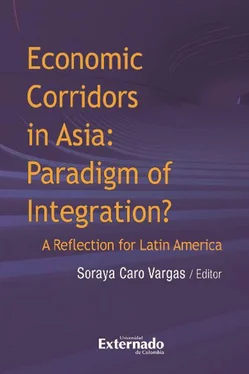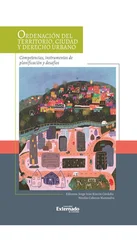8. INDO-PACIFIC ECONOMIC CORRIDOR (IPEC)
As previously discussed, India, for its part in order to give the necessary momentum to the sub regional economic integration and also promote its integration into the regional value chain, promoted MIEC. This economic corridor is meant to promote industrialization in parts of Southern Asia and also better integrate India into this growing region. Capitalizing on the existing infrastructure networks, the US has been working on the concept of the Indo-Pacific economic corridor which is still in the planning stages. ‘The IPEC vision includes physical infrastructure, energy, trade integration, and increased people-to-people ties. This activity will focus solely on economic integration through trade, investment, and private sector engagement. Through a coordinated analysis with other U.S. government departments – such as the Department of State, U.S. Agency for International Development (USAID), the Office of the United States Trade Representative (USTR), and the Department of Commerce’ ( USAID, 2018). ‘It aims to support the United States’ vision of an Indo-Pacific Economic Corridor that bridges South and Southeast Asia to promote regional stability and economic prosperity. This particular study focuses exclusively on trade integration and considers various ways that the U.S. government can play a more influential role in fostering regional trade integration in South and Southeast Asia’ ( USAID, 2018). The IPEC would act as a bridge between the two economies as it intends to bring south Asia and Southeast Asia closer. The transport corridors across the sub-region would help in the easy flow of labor and commodities, even though the structural constraints remain.
9. TRANSPORT CORRIDORS –BBIN AND BCIM INITIATIVE
During his visit to China in May 2015, Prime Minister Modi referred to BCIM as one of the important areas of convergence between India and China and it was also reflected in the Joint Communiqué between the two leaders. Modi has been in favour of opening the BCIM corridor for the benefit of India and the participating countries. However, the sectors and the areas which would be open for cooperation between the four countries would be decided and steered by consensus and dialogue. BCIM is expected to open the trade route, particularly the land route, for India to reach out to its northeastern neighbors and Myanmar. With full implementation of the BBIN (Bangladesh, Bhutan, India and Nepal) transport corridor where the motor vehicle arrangement is seen as a successful homogenization and standardization of motor vehicles, driver licenses and improvement in transport infrastructure. Both these regions (BBIN and BCIM) are critically important for India to generate economic growth and development as well as reduce freight cost on getting more integrated with China; India has accepted their request to participate in the BCIM economic corridor. China has been looking for easy access to the Indian Ocean for its southern provinces and BCIM acts as the structural edifice for achieving this objective. However, there is a caveat to the whole issue and that is that at some point in time, the BCIM should be combined with Mekong India Economic Corridor Initiative and also India’s initiative towards integration with ASEAN.
The BCIM, having a geographical area of 208,000 sq. km ( Singh, n.a), has been a unique dialogue forum in many respects. It is one of the very few regional forums in which China and India are more or less equal co-partners, although some Indian observers see it as another Chinese geopolitical design to penetrate South Asia. India and China are the two ‘big economies’ of the region, and their cooperation might hold this regional initiative together. While China and India have comparatively better technology, a more efficient labor force and improved physical and commercial infrastructure, Bangladesh and Myanmar have a large unskilled and semi-skilled labor force as well as basic and intermediate technology. BCIM can be further explored subject to China’s keen intention of furthering economic partnership with India. However, while the routes with Bangladesh and Myanmar would be strengthened, the route connecting India with China has been relatively underdeveloped or limited in development which means only a two-lane highway which leads to structural constraints in trade volume.
The main reason for creating this economic corridor and supporting this endeavor is because India’s ‘Act East’ Policy needs a transit corridor as well as port cooperation with Bangladesh. Bangladesh has facilitated the necessary transit linkages to help India connect its mainland to the Northeast. Unless the pre-partition transport linkages are re-established and India is able to integrate its road and rail infrastructure with Bangladesh, the Northeast cannot be easily accessed, and if that is not possible, there is no point for India to attempt to connect to Southeast Asia through the Northeastern Region (NER). The reality is that India first needs Bangladesh to help access its Northeast region and thereafter use the region to connect to Southeast Asia. So, it is important for the success of the Act East Policy to push ahead with the BCIM process because that involves both Bangladesh and Myanmar which are important to developing India’s overland connectivity to China and Southeast Asia. However, India wants BIMSTEC to be promoted instead of BCIM,. It invariably would merge BBIN, BIMSTEC together.
10. STRUCTURAL CONSTRAINTS AND BOTTLENECKS
The challenges that India has been facing with regard to the national infrastructure projects has been the financing of the project costs and also problems with regard to project execution and meeting the deadlines for the completion of the project. India has an infrastructure deficit and it has tried hard to get investment from Gulf countries for its USD 7.5 trillion worth of projects. However, the response from the Gulf countries has been lukewarm. Apart from the challenge of finance, the local population demands in terms of relocation, land acquisition and compensation issues, and political demands for provincial and regional priority for labor and employment in those projects, have been major causes of concern. Furthermore, the identification of core areas for development in terms of industrial projects and localized economic units supported by ancillary industries is being done with field reports and feasibility studies. Most of these studies are commissioned by the different ministers and also by private institutions such as PricewaterhouseCoopers (PWC) and other such institutions. The issues related to projects have been addressed through Special Purpose vehicles which are more project and outcome based and have been structured in such a way that their primary function is the completion of the project. The only aspect with regard to the infrastructure projects is that there has been very little foreign direct investment. Therefore, the course that the government and other institutions have taken has been to float infrastructure bonds, state and center financing of projects, long-term financing through financial institutions, tax benefits and also tax breaks to the early birds to the project. Once the projects are finished, then these loans need to be repaid and in case these projects become unviable then the escalating interest servicing and maintenance would be an issue.
The purpose of these economic corridors is to promote capital and labor flows in a seamless manner. This can have challenges given the demographic changes as well the concern with the local population about the employment destined for them being taken away by outsiders. As India already has provisions for state residency-based reservation in government jobs and therefore this might trickle down to the private sector also because of political preferences. The major challenge for a high-density population area is the land acquisition and also proper rehabilitation of the people. However, the government has taken utmost care not to disturb the populated areas and has given compensation which was much higher than the prevailing market rate. Likewise, with regard to inland waterway projects, there have been apprehensions that too much cargo movement would disturb the fish habitats and also due to shallowness in the river at certain places it would lead to problems in navigation and also affect the cargo carrying capacity of the boats or barges. Furthermore, the issue of finance has been addressed through public-private funding and also through institutions such as the World Bank. A few countries such as Japan have taken keen interest in developing the freight and transport corridors in India and also at easy interest rates, known as soft loans.
Читать дальше












